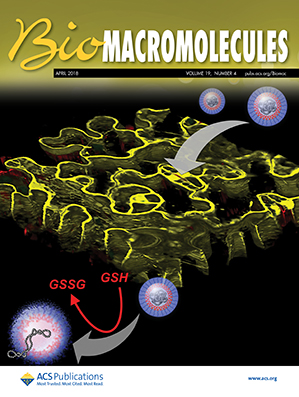Cation-Driven Modulation of Tau Condensates: Insights into Liquid–Liquid Phase Separation and Rheological Properties
IF 5.4
2区 化学
Q1 BIOCHEMISTRY & MOLECULAR BIOLOGY
引用次数: 0
Abstract
The formation of biocondensates through liquid–liquid phase separation (LLPS) has emerged as a vital and ubiquitous phenomenon contributing to the spatiotemporal coordination of cellular processes. Additionally, dysregulation of LLPS is increasingly implicated as a previously overlooked driver of diseases. LLPS typically involves multivalent noncovalent interactions among biomolecules, yet the role of solvent molecules, particularly water, in this process has received increasing attention. Metal ions are essential for life and exist in varying concentrations within cells. Both the concentration and type of metal ions significantly influence the phase separation of biomolecules. Ions with different degrees of hydration can uniquely alter the structure of water, which, in turn, affects LLPS. In this study, we use hyperspectral imaging (HSI) analysis and optical tweezers to investigate the effects of cations with different degrees of hydration on solvent properties within Tau condensates, an intrinsically disordered protein involved in Alzheimer’s disease. We first demonstrate that the environment within Tau droplets is more structured than the diluted phase. Then, we show that highly hydrated cations enhance phase separation, increase the proportion of restricted water within Tau droplets, and slow down their relaxation dynamics, suggesting a correlation between water structuring and rheological properties. By connecting solvent properties with the stability and dynamics of phase-separated droplets, this research provides insights into the molecular mechanisms governing LLPS and how environmental factors, such as metal ions and water structure, influence this process.
- Download: Download high-res image (53KB)
- Download: Download full-size image
阳离子驱动的Tau凝聚物调制:对液-液相分离和流变特性的见解。
通过液-液相分离(LLPS)形成的生物凝聚物已成为一种重要而普遍的现象,有助于细胞过程的时空协调。此外,LLPS的失调越来越多地被认为是以前被忽视的疾病驱动因素。LLPS通常涉及生物分子之间的多价非共价相互作用,然而溶剂分子,特别是水,在这一过程中的作用越来越受到关注。金属离子是生命所必需的,在细胞内以不同的浓度存在。金属离子的浓度和类型对生物分子的相分离有重要影响。不同水合程度的离子可以独特地改变水的结构,从而影响LLPS。在这项研究中,我们使用高光谱成像(HSI)分析和光学镊子来研究不同水合程度的阳离子对Tau凝聚物溶剂性质的影响,Tau凝聚物是一种与阿尔茨海默病有关的内在无序蛋白质。我们首先证明了Tau液滴内的环境比稀释相更有结构。然后,我们发现高度水合的阳离子增强了相分离,增加了Tau液滴内受限水的比例,并减缓了它们的弛豫动力学,这表明水结构与流变性能之间存在相关性。通过将溶剂性质与相分离液滴的稳定性和动力学联系起来,本研究提供了控制LLPS的分子机制以及环境因素(如金属离子和水结构)如何影响这一过程的见解。
本文章由计算机程序翻译,如有差异,请以英文原文为准。
求助全文
约1分钟内获得全文
求助全文
来源期刊

Biomacromolecules
化学-高分子科学
CiteScore
10.60
自引率
4.80%
发文量
417
审稿时长
1.6 months
期刊介绍:
Biomacromolecules is a leading forum for the dissemination of cutting-edge research at the interface of polymer science and biology. Submissions to Biomacromolecules should contain strong elements of innovation in terms of macromolecular design, synthesis and characterization, or in the application of polymer materials to biology and medicine.
Topics covered by Biomacromolecules include, but are not exclusively limited to: sustainable polymers, polymers based on natural and renewable resources, degradable polymers, polymer conjugates, polymeric drugs, polymers in biocatalysis, biomacromolecular assembly, biomimetic polymers, polymer-biomineral hybrids, biomimetic-polymer processing, polymer recycling, bioactive polymer surfaces, original polymer design for biomedical applications such as immunotherapy, drug delivery, gene delivery, antimicrobial applications, diagnostic imaging and biosensing, polymers in tissue engineering and regenerative medicine, polymeric scaffolds and hydrogels for cell culture and delivery.
 求助内容:
求助内容: 应助结果提醒方式:
应助结果提醒方式:


